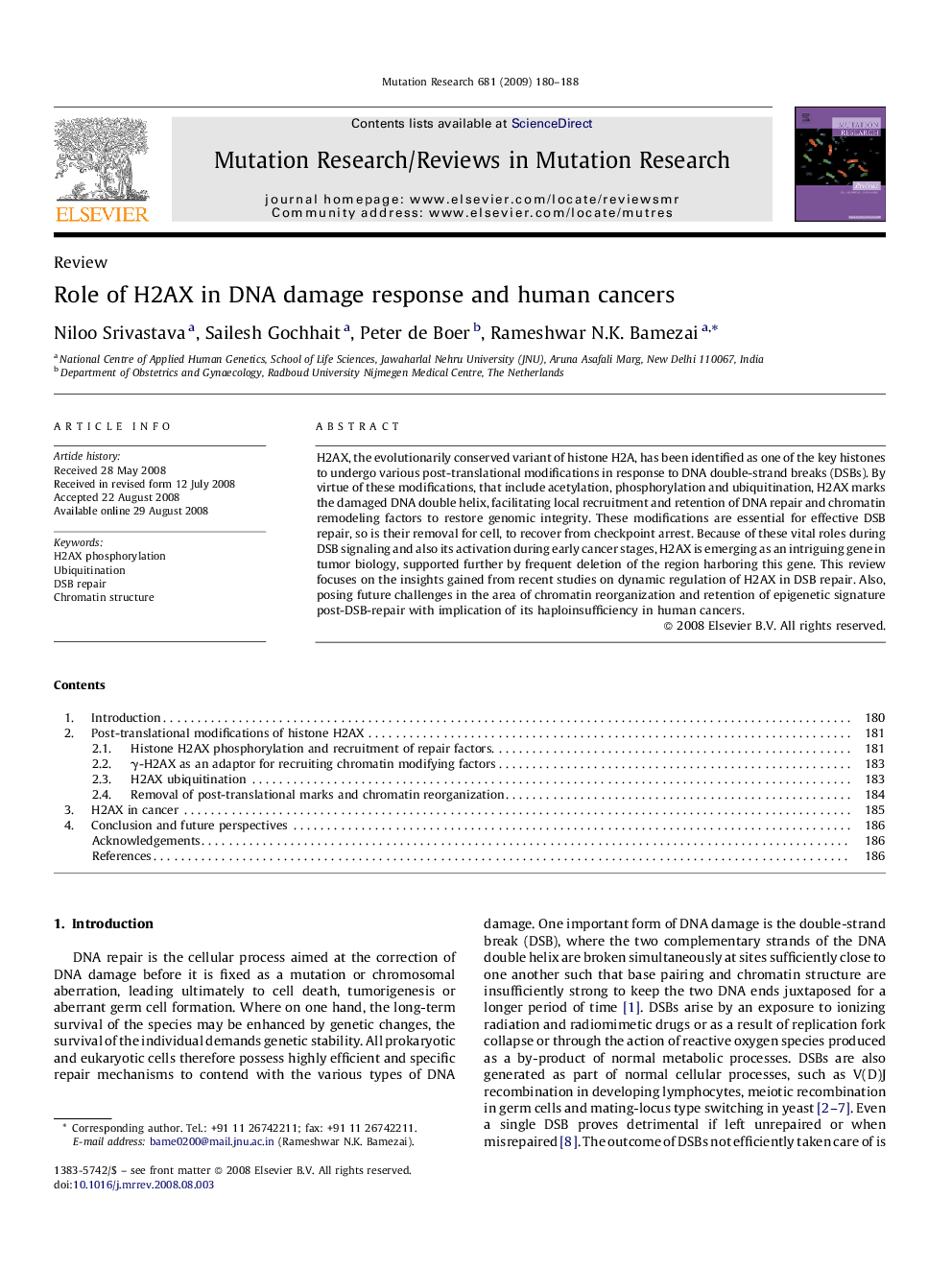| Article ID | Journal | Published Year | Pages | File Type |
|---|---|---|---|---|
| 2149707 | Mutation Research/Reviews in Mutation Research | 2009 | 9 Pages |
H2AX, the evolutionarily conserved variant of histone H2A, has been identified as one of the key histones to undergo various post-translational modifications in response to DNA double-strand breaks (DSBs). By virtue of these modifications, that include acetylation, phosphorylation and ubiquitination, H2AX marks the damaged DNA double helix, facilitating local recruitment and retention of DNA repair and chromatin remodeling factors to restore genomic integrity. These modifications are essential for effective DSB repair, so is their removal for cell, to recover from checkpoint arrest. Because of these vital roles during DSB signaling and also its activation during early cancer stages, H2AX is emerging as an intriguing gene in tumor biology, supported further by frequent deletion of the region harboring this gene. This review focuses on the insights gained from recent studies on dynamic regulation of H2AX in DSB repair. Also, posing future challenges in the area of chromatin reorganization and retention of epigenetic signature post-DSB-repair with implication of its haploinsufficiency in human cancers.
